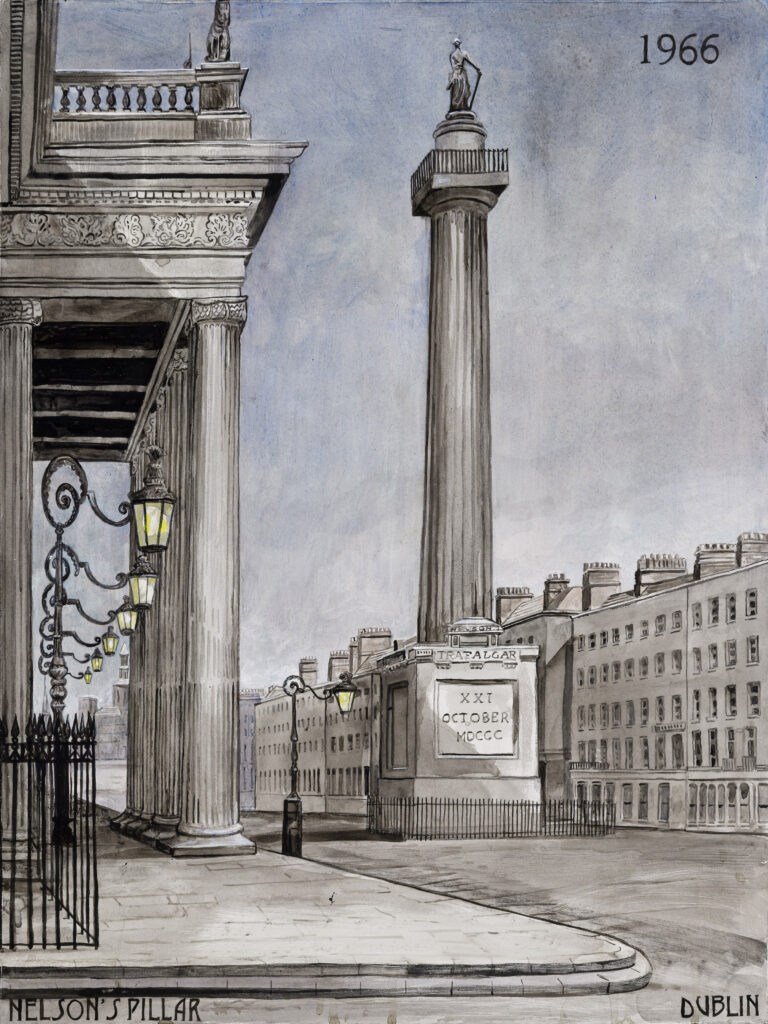Dublin, Ireland
Blown-up 1966

There are six days of a window in time that I would have liked to have visited Nelson’s Pillar. They are between March 8th 1966 and March 14th 1966, that small vignette of time would be to see the remaining stump left since the IRA attempted to blow it up and when the official Irish Army were called in to finish the job with a controlled explosion; alas, all that happened before I was born. The reason why I chose this work is because it’s an interesting icon of colonialisation in a country that has had such a turbulent relationship with its coloniser. A current wave of British selective nostalgia has now birthed the nightmare that is Brexit, leading to a new low in Anglo-Irish relations, with a danger that these kinds of calamitous acts of exceptionalist memorialisations and their inevitable consequences, rather than solidarity, may become commonplace. Aideen B.
Nelson’s Pillar was a granite column capped with a statue by Thomas Kirk of British naval hero Horatio Nelson, located in what was then Sackville Street in Dublin. The memorial was designed by William Wilkins and Francis Johnston and erected in 1809. Although it was a popular attraction, the decision to honor an Englishman in the middle of Dublin was always controversial. A failed attempt was made to blow it up during the Easter Rising; it survived until March 1966, when it was severely damaged by explosives and had to be demolished by the Irish Army. In 2020, a former IRA member claimed responsibility for the bombing. Since 2003, the Spire of Dublin has occupied the site. The painting is based on an uncredited 19th century engraving from Wikipedia.